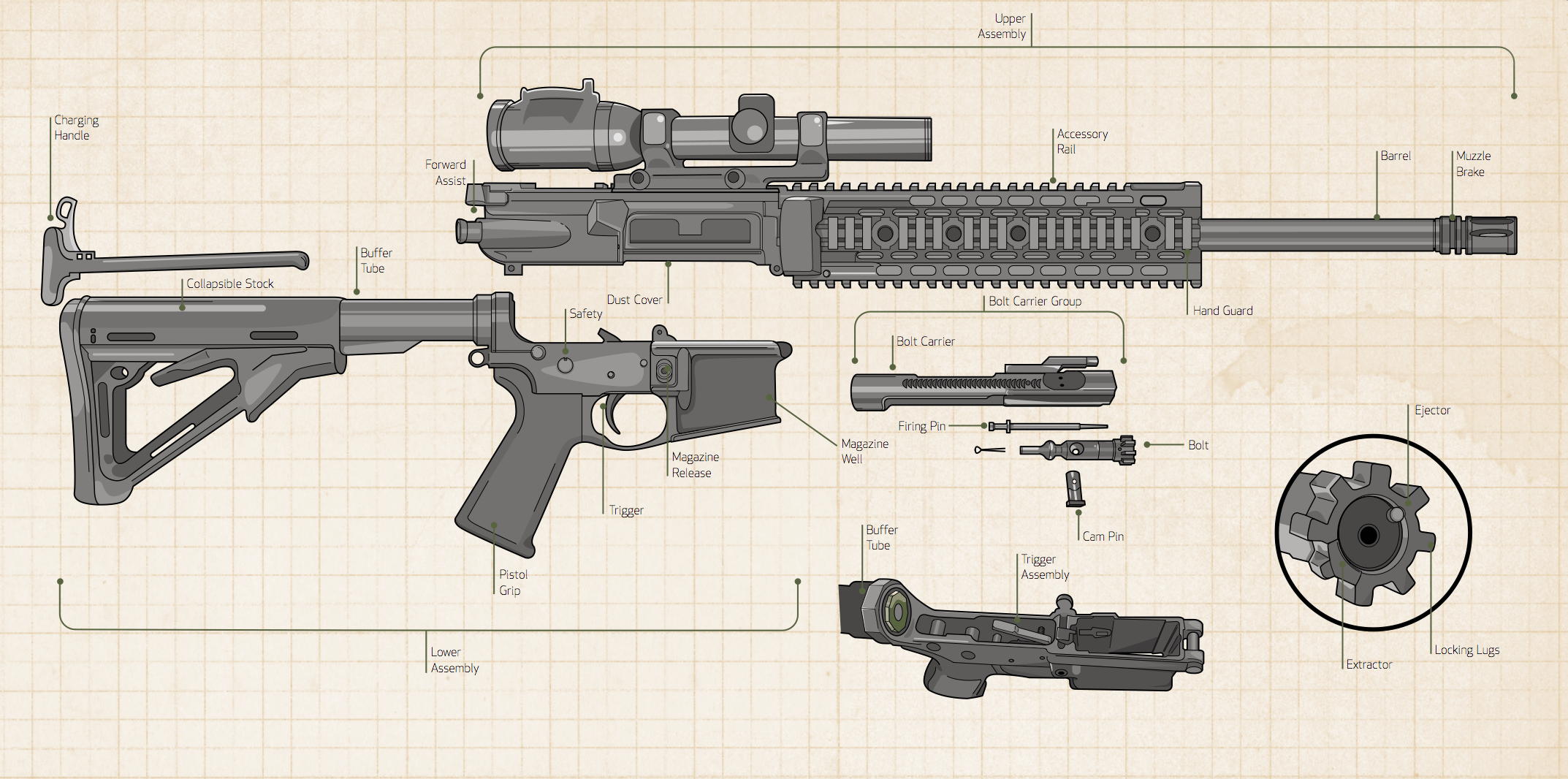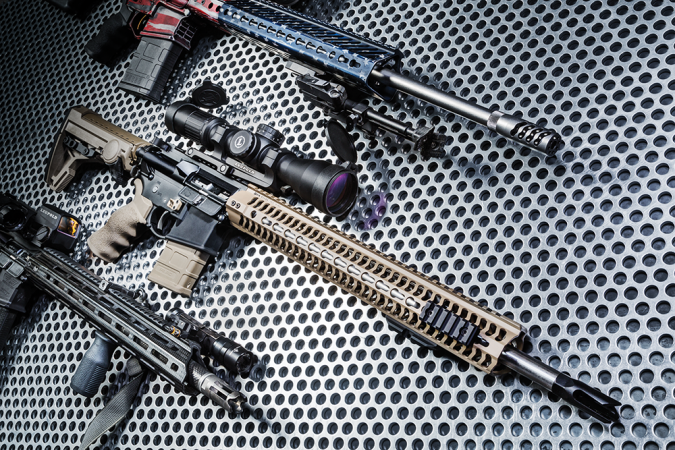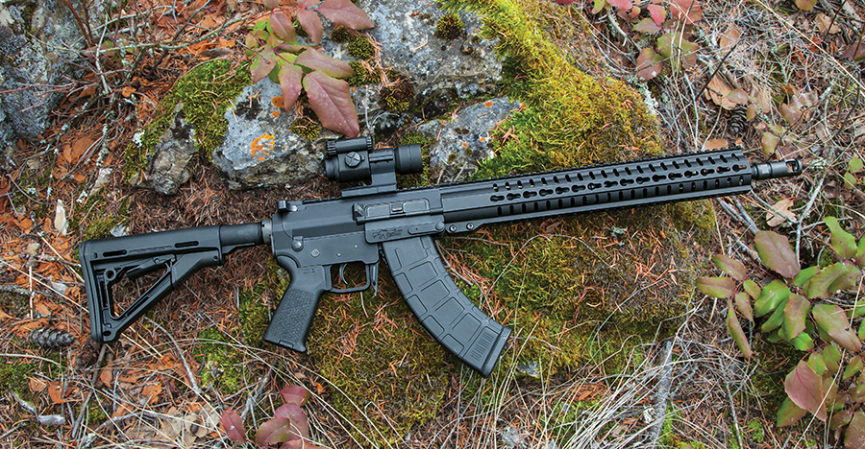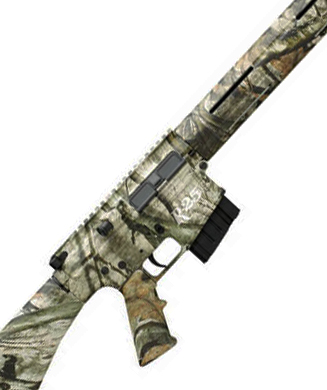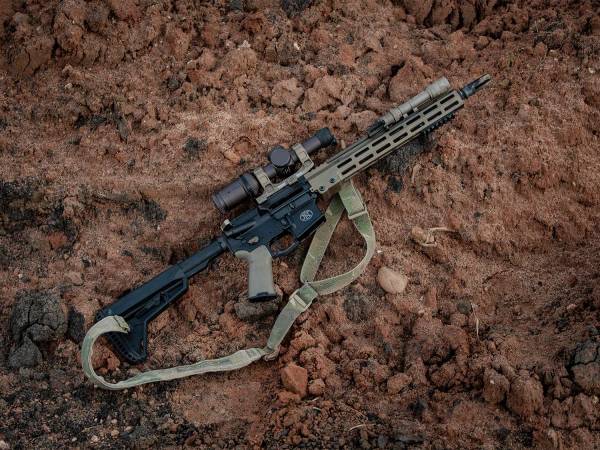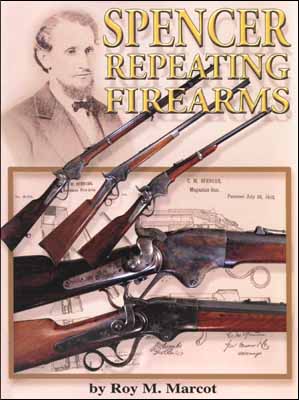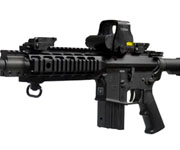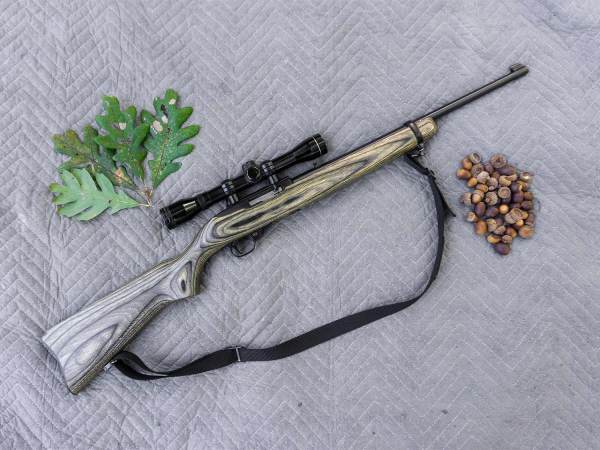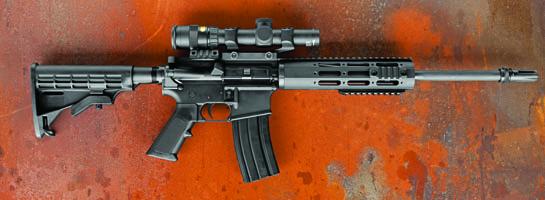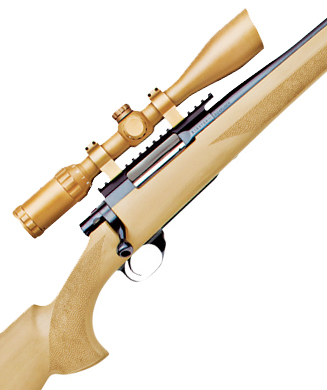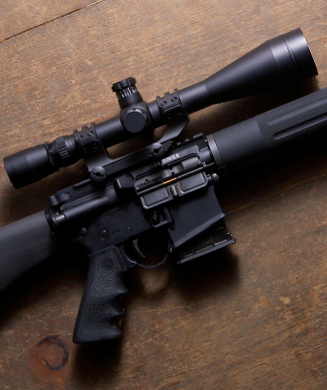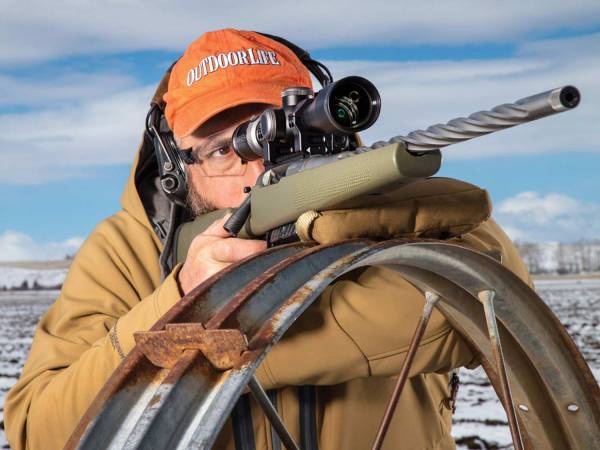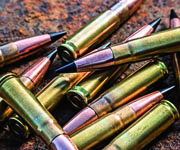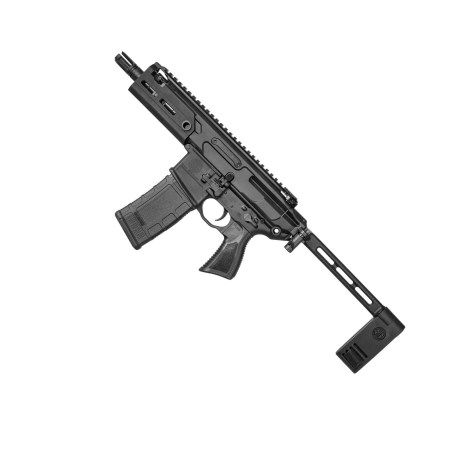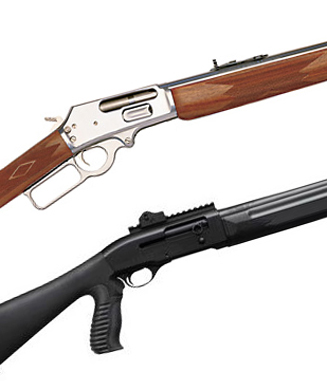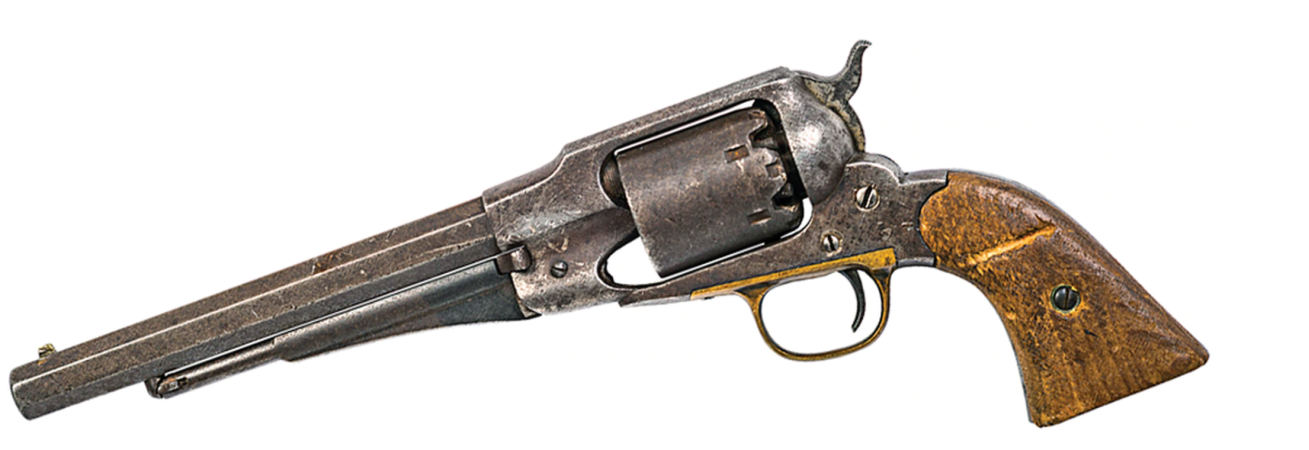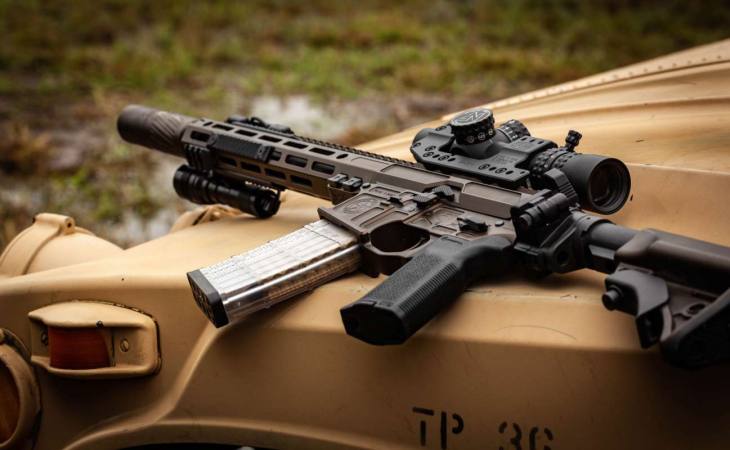We may earn revenue from the products available on this page and participate in affiliate programs. Learn More ›
This is tip #76 from the Ultimate Shooting Skills Manual by Shooting Editor John B. Snow. You can pick up a copy with all 212 tips here, or tell us about your favorite gun here for a chance to score a free copy.
The AR-15, today more generically known as the Modern Sporting Rifle or MSR, was born during a time of turmoil and transition in the history of the U.S. military. During the 1950s, the Cold War was in full swing and we were entering an era of nuclear deterrence when future conflicts directly involving major powers seemed less likely than smaller-scale actions in proxy states. This was a radical change from the set-piece battles of the First and Second World Wars.
THE LAY OF THE LAND
In the late 1940s, the Soviets had fielded the game-changing AK-47, ushering in an era of arming infantry with assault weapons on a mass scale. Lightweight, easy to wield, reliable, and packing a great deal of firepower, the AK-47 gave the Soviet Union, and its allies, a terrific advantage over its adversaries. The United States, meanwhile, adopted the M14 in 1957, a heavy-caliber firearm cut from the traditional “battle rifle” exemplified by the M1903 Springfield and M1 Garand—and it became obsolete the moment that it began rolling off the production line.
AMERICA STEPS UP
By the early 1960s this deficit could no longer be ignored. Even though the M14 represented a step backward (at least in its role as a general issue rifle; as a specialized weapon, it is an excellent firearm) the military had been exploring the concept of high-velocity small-caliber weapons since the 1950s.
This was the context in which the AR-15—later designated the M16 /XM16E1—came to the fore. On paper, it was an ideal choice. It fired a 55-grain 5.56mm bullet faster than 3,200 fps, and it also fulfilled the military’s requirements for penetration downrange.
A BAD BEGINNING
Unfortunately, this rifle, the brainchild of Eugene Stoner and his colleagues at ArmaLite, was not ready for deployment. As C. J. Chivers phrased it in The Gun, his excellent history of the AK-47: “The early M-16 [sic] and its ammunition formed a combination not ready for war. They were a flawed pair emerging from a flawed development history. Though prone to malfunction, they were forced into the troops’ hands through a clash of wills and egos.”
The results on the battlefield were catastrophic: These rifles jammed in battle and the soldiers that were carrying them died.
PATH TO SUCCESS
So why are the M16, its little brother the M4, and their civilian AR-15 counterparts still part of the landscape? Because, through the course of the ensuing decades, those flaws were worked out of
the system, and the platform has now lived up to its potential, both on the battlefield and as a civilian sporting arm.
Improvements were made to the ammunition. The rifle’s barrel twist rates were optimized for various bullets. The chambers were properly chrome-lined. And, more recently, the incorporation of different sighting systems and accessories, along with the development of specialized uppers, barrels, stocks, and hand guards, has made the MSR America’s most versatile and popular rifle.
No matter the application—hunting, personal protection, competition, plinking—the AR-15 can be configured to get the job done.
TIMELINE
1948
The Soviet Union introduces the AK-47, invented by Mikhail Kalashnikov, thus beginning the era of automatic weaponry issued to conscripts.
1956
Eugene Stoner at ArmaLite develops the AR-10, heralded as a revolutionary design. Fewer than 10,000 are made.
1957
ArmaLite substantially modifies the AR- 10, chambering it for the Remington .223 and names the new model the AR-15.
1959
Confronted by financial difficulties, ArmaLite sells the AR-15 to Colt. Colt makes the first sale of the AR-15 to Malaya (modern-day Malaysia).
1962
Colt rebrands the gun as the M16, adapting it for semiauto and full-auto, and it is adopted for use by the U.S. military.
1963
Semiauto “sporter” ARs become available for civilian use.
1965
The M16 is widely rolled out in Vietnam; early models suffer serious issues with jamming.
1968
The M16 becomes the U.S. Army’s standard service rifle, thus replacing the outdated M14.
1994
Widespread restrictions on usage and modification come into being in the United States as part of the Assault Weapons Ban.
2004
Ownership of the design of the M4 carbine , which was derived from earlier carbine M16 rifles, is taken by the U.S. Army.
2012
ARs become the United State’s most popular rifle type, with close to four million in civilian use.

